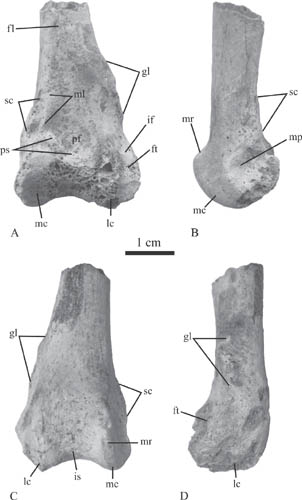The fossil record of anseriforms in the Paleogene of the Northern Hemisphere is somewhat limited in terms of its overall diversity. Much of that early Cenozoic record is of the extinct Presbyornithidae, known from the Middle Paleocene through the Middle Eocene. Drs. Thomas A. Stidham and NI Xi-Jun, Institute of Vertebrate Paleontology and Paleoanthropology (IVPP), Chinese Academy of Sciences, reported two new avian fossils from the Late Eocene of Xinjiang in western China. According to the study published in Vertebrata PalAsiatica 52 (1), these two bones are possible first occurrence of the extinct anseriform group Romainvilliinae (Anatidae) within China and Asia, thus providing new material for studying the evolution and biogeography of romainvilliines.

Fig.1 The Xinjiang anseriform tarsometatarsus in distal (A), lateral (B), dorsal (C), medial (D) and plantar (E) views, and the right tarsometatarsus of Anas fabalis in distal (F), lateral (G), dorsal (H), medial (I) and plantar (J) views. (Image by IVPP)

Fig.2 The Xinjiang anseriform distal femur in caudal (A), medial (B), cranial (C), and lateral (D) views. (Image by IVPP)
|

